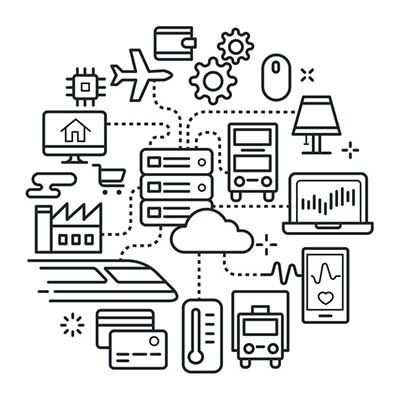Directive Blogs
The Internet of Things Continues to Expand
The Internet of Things is now made up of over 15 billion devices. 15 billion. This number includes both consumer devices in a home environment as well as business devices that are typically used in an office setting. As such, you cannot risk ignoring this phenomenon, whether it’s from a security standpoint or one of practicality. We’ll discuss the many ways the IoT is shaping business practices in today’s modern office.
A Brief Review of the IoT
An Internet of Things device tends to have its typical functionality along with additional connection to the Internet. The only real caveat is that the device needs to not be something that would ordinarily have Internet connection as its primary function. Consider fitness devices like watches that can send data to your phone for easy viewing, as well as devices like Amazon Echo that can help you control your home with voice commands.
The convenience and “cool” factor surrounding these devices makes them popular among consumers, and as such, there is a high adoption rate for this technology. Projections place the economic value of the Internet of Things at approximately $4-$11 trillion by 2025, with some 20.4 billion devices all around the world by 2020.
Home Usage by Businesses
Since the IoT is largely associated with personal use and casual purposes, it’s largely known for being relatively insecure compared to other types of devices. However, Gartner reports that businesses are still using IoT devices, and not just to a minor degree. In fact, it’s estimated that 63% of IoT devices in 2017 were owned by consumers, while businesses contributed to 57% of the spending on IoT technology.
This trend isn’t surprising, as the kind of features that consumers want, also translate well to a business’ needs. For example, some of the devices used by consumers, like IoT powered security cameras, can also be used to monitor the office. Of course, the opposite is also true; there are devices for businesses that consumers simply can’t purchase due to the high price tag. An example of this is the smart devices used by subscription-based services like gyms. The IoT fitness equipment might be too expensive for the average user, but it’s just right for these kinds of businesses.
Barriers to the IoT
Implementing the Internet of Things in the workplace can be challenging. Before investing too much, be sure to check if there is a measurable need that the device addresses. The IoT is definitely more suited to businesses that have a lot of repetitive work, as it can be used to alleviate the monotony of these tasks. However, it’s important to make sure that an investment into the IoT will be worth it from a financial standpoint. Of course, security will continue to be a problem for IoT devices, so it’s also critical that you take this into account.
To get started thinking about the Internet of Things as an asset rather than a threat, reach out to Directive at 607-433-2200.



Comments